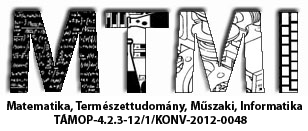Effect of PACAP on BMP signalling pathway of UMR-106 osteoblastic cell line
Előadás adatai
Since its discovery, roughly two decades ago, PACAP has been a popular topic of research. Involvement of these polypeptides in the regulation of differentiation has been documented, both in the CNS as well as in a wide variety of peripheral tissues. Interestingly though, the connection of PACAP to the known signalling pathways of osteogenesis has been lacking. Our aim was to study and clarify whether an administration of PACAP to a culture medium of UMR-106 rat osteoblastic cells had any effect on the regulation of their differentiation. PACAP 1-38 [100nM] and a truncated PACAP 6-38 [10µM] were used as an agonist and as an antagonist of the PACAP receptors, respectively.
Administration of PACAP neither altered the morphology of the cells nor their viability, but an increased capacity to proliferate was documented. One of the three main signalling pathways of osteogenesis is the BMP-signalling pathway, by the use of either Runx2 or Smad1/5/7 transcription factors as its downstream targets. Runx2 can be phosphorylated by PKA, which is functioning as a key regulatory kinase of both BMP as well as PACAP-cAMP downstream activations. After the addition of PACAP, a significant increase in both mRNA and protein expression of PKA was detected. No significant increase in the expression of Runx2 was shown. However, an elevated nuclear signal of Runx2 was seen with immunohistochemistry. This translocation might result in an increased protein expression of osterix, collagen type I, ALP as well as BMPs. Increased expression of osteoblastic differentiating cytokines, BMPs 2, 4, 6 and 7 were also detected. Downstream target of the BMP activation are Smads 1/5/7, nuclear translocation of which induces the expression of genes responsible for osteogenesis. An addition of PACAP showed a significant increase in both mRNA and protein expression of Smad1.
Based on our data we can conclude that one of the mediators of the positive effect of PACAP-administration on osteogenesis is an enhanced BMP-signalling.
Támogatók: Támogatók: Az NTP-TDK-14-0007 számú, A Debreceni Egyetem ÁOK TDK tevékenység népszerűsítése helyi konferencia keretében, az NTP-TDK-14-0006 számú, A Debreceni Egyetem Népegészségügyi Karán folyó Tudományos Diákköri kutatások támogatása, NTP-HHTDK-15-0011-es A Debreceni Egyetem ÁOK TDK tevékenység népszerűsítése 2016. évi helyi konferencia keretében, valamint a NTP-HHTDK-15-0057-es számú, A Debreceni Egyetem Népegészségügyi Karán folyó Tudományos Diákköri kutatások támogatása című pályázatokhoz kapcsolódóan az Emberi Erőforrás Támogatáskezelő, az Emberi Erőforrások Minisztériuma, az Oktatáskutató és Fejlesztő Intézet és a Nemzeti Tehetség Program



